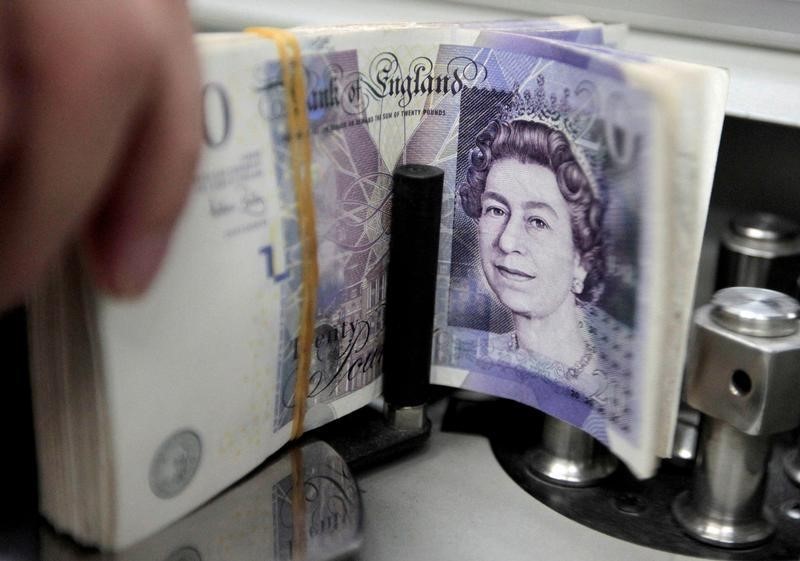LONDON (Reuters) - Sterling's trade-weighted index fell to its lowest since early 2009 on Monday, extending hefty losses seen last week, on deepening worry about an adverse impact on the British economy from its exit from the European Union.
The currency was slightly calmer than Friday when a "flash-crash" wiped out a tenth of its value in a matter of minutes in Asian trade, but sentiment towards the pound remained gloomy with speculators bets against it at record highs.
Sterling index fell to 74.2 <=GBP> its lowest since Jan 2009 and down 0.7 percent on the day. The index has lost over 9 percent since the referendum results on June 24 where Britons voted to leave the EU.
The drop in the index reflected sterling's broad struggles. It was down 0.2 percent against the dollar at $1.2410
Losses accelerated last week on worries about how Britain will exit the EU and about Prime Minister Theresa May's comments on loose monetary policy, which some saw as a thinly veiled attack on the Bank of England.
Many investors think May's government is leaning towards a "Hard Brexit", where Britain gives up full access to the EU's single market in order to impose maximum control on its borders. Some fear that could hinder trade and constrict the foreign investment needed to fund Britain's huge current account deficit, one of the biggest in the developed world.
"'Hard' Brexit fears are unlikely to abate anytime soon and in the near term there is scope for another 2-3 percent risk premium to be built into sterling/dollar and euro/sterling," said Chris Turner, head of currency strategy at ING, adding last week saw an estimated 4-5 percent risk premium being priced in as per their financial models.
When investors are nervous or cautious about putting money into country's assets they demand higher premiums for their investments which often can lead to a cheaper or weaker currency.
A few large banks have lowered their forecasts for the pound. HSBC, a leading British bank, said on Friday it forecast the pound to drop to $1.10 and parity against the euro by the end of 2017, citing growing uncertainty from Brexit.
Traders said sentiment was unlikely to turn around soon with the options market indicating some more weakness. Six-month sterling/dollar risk reversals, capturing the date by which Britain is expected to formally begin the process of leaving the EU, showing a bias for more weakness.

Risk reversals are a gauge of the balance in the market between options betting on a currency rising or falling. The six-month risk reversal stood at -1.8 vols on Monday, down from -2.2 on Friday, according to ICAP (LON:IAP) data, but still showing its greatest bias towards sterling weakness since July. A negative number indicates a bias for a weaker pound.